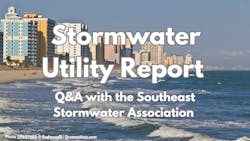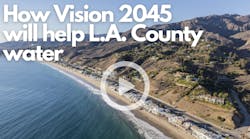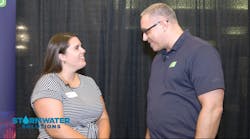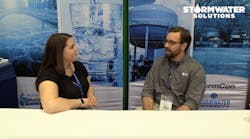In 2023, The Southeast Stormwater Association published its 8th biennial survey of stormwater utilities. The survey's purpose is to provide insight for managers and policymakers regarding trends in utilities and finances. The report results are open to only SESWA members, but Stormwater Solutions asked a few questions that could apply beyond members. SESWA's answers follow.
SWS: This is the 8th survey. Why was it started and how has it changed since its inception?
Danielle Hopkins, SESWA executive director: The Southeast Stormwater Association’s Stormwater (SESWA) Utility Report has been providing the results of its biennial Southeast Stormwater Utility Report since 2007. A big thanks goes to SESWA’s membership for completing this detailed survey instrument. The purpose of the report is to provide information to both managers and policymakers concerning trends in the characteristics of stormwater programs, utility rates and other practices within local governments. With this goal in mind, the survey instrument has intentionally remained the same. By keeping the survey instrument unchanged over the years, SESWA can more easily track responses, notice changes and identify upcoming trends.
The biggest change to SESWA’s Utility Report since its inception is how the information is provided. What started as a bound hardcopy resource has become an online resource that SESWA members can view/download at no cost. In addition to viewing the report online, members have access to stormwater utility rates for all states in the Southeast.
SWS: What trends in utilities do you see emerging based off the survey?
Hopkins: Revenue generated from stormwater utilities represents a significant source of funding to address stormwater pollution and flooding problems. Most jurisdictions continue to report that utility charges are adequate to meet most administrative costs, however, there is an emerging concern that utility charges are not adequate for needs associated with capital improvement programs. Whether stormwater utility fees can be raised at a rate to keep pace with the costs of TMDLs (Total Maximum Daily Load) and new water quality criteria remains to be seen.
Another trend revealed from the 2023 data is an increasing number of utilities reporting the use of a tiered stormwater utility rate structure. We are told that this rate structure allows local governments to collect fees based on a site’s stormwater impact. In this year’s report we have included additional details on tiered rate structures from respondents.
SWS: What is the biggest barrier to implementing stormwater utility fees?
Hopkins: A primary barrier in creating a stormwater utility is community acceptance. It is true that residents, business owners and non-profit organizations will initially question the need for another bill. However, municipalities can gain community acceptance through public education, interaction and participation. It is important to show the community exactly what their money will do and how it will be invested, emphasizing that everyone pays for the services they use based on the stormwater they contribute to the system (and not just the value of their property.)
SWS: There's discourse in the industry that it is hard to get others to see stormwater as a true utility. What is SESWA's perspective on that?
Hopkins: Stormwater utilities are an increasingly important part of urban infrastructure. As local governments face increasing pressure to reduce runoff and flooding, stormwater utilities have become an important tool to provide sustainable funding for stormwater programs and infrastructure. The SESWA 2023 Southeast Stormwater Utility Report identified 114 jurisdictions in the southeast operating utilities and an 2022 report from Western Kentucky University identified more than 2,000 utilities operating in the US. Stormwater utilities are being used to serve communities of all sizes with populations ranging from 86 to 1.5 million people (EFAB 2020).
SWS: The survey asks a few questions about personnel. How have you seen these answers change over the years? Does SESWA see workforce gaps as barriers to implementing stormwater utilities?
Hopkins: The SESWA Report collects personnel data relating to the current number of full-time employees funded with stormwater fee revenue including a breakdown of employees by program area. The number of stormwater related FTEs is on the rise with the largest growth in Operations and Maintenance. Operations and Maintenance is a critical component of effective stormwater programs. A community must undertake maintenance operations, both routine and remedial, if it intends to keep its stormwater infrastructure operational at or near its design capacities. One trend we are seeing is that while the need for stormwater personnel is increasing, there has been an inability to attract and hire qualified stormwater professionals. These increased vacancies could impact stormwater operations in coming years.
SWS: One of the questions asked is how important education efforts toward the public are. What is SESWA's perspective on that?
Hopkins: Stormwater utilities are becoming increasingly important in the modern world. They provide an essential service to communities by managing stormwater runoff and protecting water resources. However, the success of a stormwater utility is largely dependent on its ability to educate the public about its services. An organized public information and education effort is essential for creating awareness about the utility's services and ensuring that it continues to be successful. Through this effort, citizens can gain a better understanding of how their money is being used, as well as the benefits of using a stormwater utility. By educating people about these topics, stormwater utilities can ensure that they continue to receive user fees and remain successful in the future.
SWS: Anything to add?
Hopkins: SESWA was formed in 2005 to assist stormwater professionals in the southeast as they seek solutions to surface water quality and stormwater management challenges. SESWA’s boundaries mirror those of EPA Region IV and include the states of Alabama, Florida, Georgia, Kentucky, Mississippi, North Carolina, South Carolina and Tennessee. With a primary focus on services to stormwater professionals in city and county governments, membership is also available to those in state, regional and local governments, the private sector, non-profit organizations, and academia. SESWA is the only regional stormwater association dedicated to improving surface water quality and advancing the interests of stormwater professionals and programs. SESWA’s 2023 Stormwater Utility Report is free for SESWA members and is available to view and download online.







